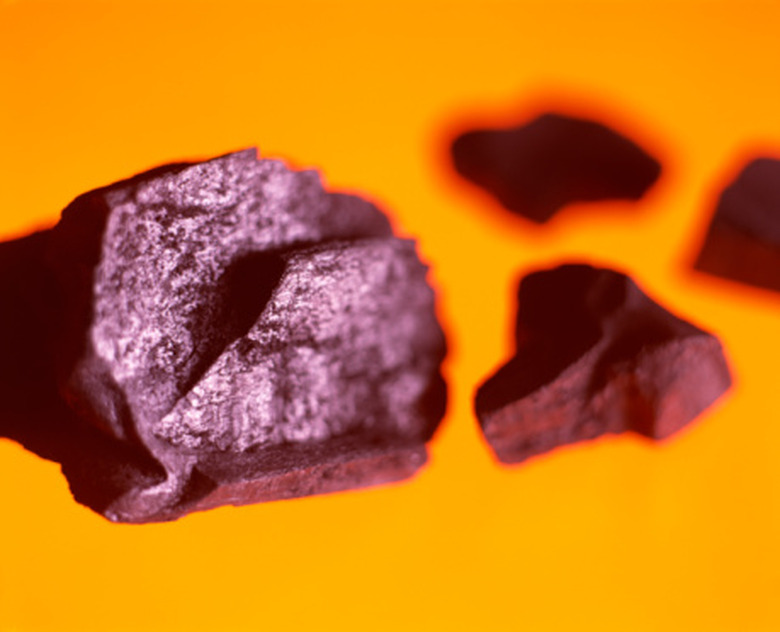Experiments With Coal
Coal is a fossil fuel that takes millions of years to create. Coal is created from plants buried under water and dirt. Heat and pressure turn the plants into coal, a mineral. Coal is classified into four types; anthracite, bituminous, sub-bituminous and lignite. Bituminous coal is the most abundant from of coal in North America, according to Britannica Online (Reference 4).
Grow Colorful Moss
Grow Colorful Moss
Sprinkle 1 tbsp. of salt over a lump of coal in a bowl covered by 1/2 cup of water. Carefully sprinkle 2 tbsp, water over the salt on the coal. Continue by adding 2 tbsp. laundry bluing and three drops of mercurochrome. Laundry bluing is a laundry whitener and can usually be found at a local grocery story. Mercurochrome is an antiseptic and is usually available in local pharmacies. For extra color add two drops of any color food coloring. Wait three days for a colorful moss to develop.
Coal as a Water Filter
Coal as a Water Filter
Fill a glass bowl or aquarium with water. Add 1/3 cup soil and mix well until the water is murky or muddy. Add a coal packet. Coal packets are found in pet shops that sell fish. Monitor the cleanliness of the water for a period of 24 hours.
Methane Gas Collection from Coal
Methane Gas Collection from Coal
Hammer 1/2 cup of soft or bituminous coal into powder. Pour or scoop the coal into the large end of a funnel and place a finger over the small opening of the funnel to prevent the coal from pouring out. Carefully turn the funnel over and place the upside-down funnel filled with coal powder into a quart size mason jar. Slowly fill the jar with water, until the upside-down funnel is covered with water. Fill a test tube with water and insert it into the small end of the funnel. Avoid putting air into the test tube. Place a rubber band around the glass jar at the water level. Observe the test tube as it fills with methane gas over a three day period.
Compare the Burning Rates of Different Coal Types
Compare the Burning Rates of Different Coal Types
Label the four different types of coal: lignite, sub-bituminous, bituminous and anthracite. Use a pair of tongs to hold each numbered sample of a type of coal over an open flame, such as a Bunsen burner. Document the speed of ignition of each sample and time the burning of each sample.
Cite This Article
MLA
, Jessica Wright. "Experiments With Coal" sciencing.com, https://www.sciencing.com/experiments-coal-8543348/. 24 April 2017.
APA
, Jessica Wright. (2017, April 24). Experiments With Coal. sciencing.com. Retrieved from https://www.sciencing.com/experiments-coal-8543348/
Chicago
, Jessica Wright. Experiments With Coal last modified March 24, 2022. https://www.sciencing.com/experiments-coal-8543348/
